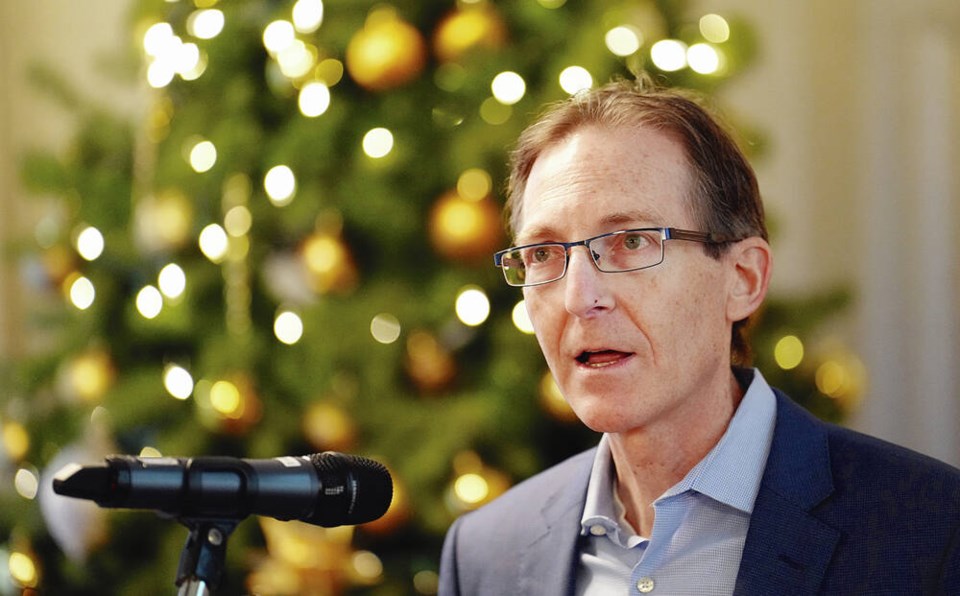As B.C. Ferries seeks to renew its fleet, it’s looking at a cost to build new ferries that’s 40 per cent higher than it was in 2020, the company’s president told Greater Victoria Chamber of Commerce members Tuesday.
“This puts huge pressure on our ability to deliver a service, particularly when we look at what is going to be needed down the road,” Nicolas Jimenez told more than 100 Chamber members at the Union Club.
B.C. Ferries has not said what it expects the new major vessels will cost, but in 2018, five new major vessels were estimated at $700 million to $1 billion.
The company earlier issued a call for qualified shipyards to build the vessels.
Some of B.C. Ferries’ terminals and vessels date back to a time when John Diefenbaker was Canada’s prime minister, Dwight Eisenhower was in the White House and the Chevrolet Corvair was billed as the sexiest car on the market, Jimenez said.
He outlined challenges facing the company as it strives to meet public expectations, pay for new vessels, mitigate environmental impacts, upgrade terminals and find ways to bridge a financial gap in its long-term plan that’s in the hundreds of millions of dollars.
B.C. Ferries’ capital costs are increasing at a faster rate than fares, he said.
“What we have today is essentially a need for this system to be affordable,” Jimenez said. “But we have a reality that the cost of running the system is increasing and that’s not because of anyone’s fault.
“Inflation is taking a real bite out of our business and the growth in ferry fares is not keeping pace.”
B.C. Ferries will submit its application next month to B.C. Ferries Commissioner Eva Hage for approval to order five new major vessels, Jimenez said later.
It’s hoped the first will arrive in B.C. by 2029. Another two diesel-electric hybrid vessels would be added by about 2037.
Upgrades to the Queen of Oak Bay and Queen of Surrey are also planned.
The system is under a crunch now because the Queen of New Westminster is out of service for several months after its propeller fell off in September.
The vessel, which can carry 1,332 passengers and crew and hold 254 cars, has twice been lengthened and widened, Jimenez said. “So it’s not even the ship that it was when it was first built in 1964.”
B.C. Ferries runs its ships between 50 and 60 years, while most other similar ferry operators are in the 30-year range, Jimenez said.
The company is planning 15 new vessels by the end of the 2030s, he said. Four electric Island-class ferries are currently being built in Romania, with plans to start bringing item into service in 2027.
Passenger and vehicle fares are capped at a 3.2 per cent increase per year for four years starting in April of this year.
The company was able to keep fare increases down after the province provided $500 million to ensure they did not move into double-digits.
As far as dealing with financial pressures, Jimenez said there are limits on what the company can do to bring in revenue under its current governance model.
“If we are to close this funding gap that I described, we’re going to need to pull every lever that we can. We’re going to have to get very creative and we’re going to have to balance the needs of the system around reliability and resilience with affordability.
“So without prejudging what that’s going to look like, I think we’re going to have to have all policy options on the table.”




